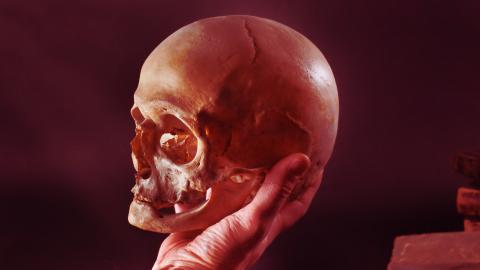Hamlet - The Eternal Image of World Literature

William Shakespeare is one of the most famous writers of all time. He created in his plays endless images, still exciting readers. In his plays, he tried to cover many problems that are still relevant. Among his most famous characters are Romeo and Juliet, Othello, Macbeth and, of course, Hamlet.
Hamlet is the character of the play with the same name. On his fate, his inner anguish, the English poet tried to show the tragic image of a man who is trying to find answers to the eternal questions of life and death. Hamlet very well feels the modern reality. He deeply experiences in himself everything that is happening around him and this is what gives him no peace.
He thinks about the nature of man.
"What kind of masterful creation is a man! How noble of reason! How infinite and wonderful in his abilities, guises and movements! How accurate and wonderful in action! ... The beauty of the universe! The crown of all living things! "Says Hamlet. He believes that a person can do everything. He idealizes the human being. And that is why Hamlet is much more disappointed by his own inconsistency and imperfection: "Oh, what a rubbish I am, what a wretched slave." He treats the whole world, every person with contempt: "Of people I do not enjoy any ..."
Hamlet with the course of the play is subject to more and more internal discord. He "lost all his gaiety, abandoned his usual occupations", because the world for him became empty, meaningless, the air - "a cloudy and plague of vapor." Hamlet is disappointed in a world where only evil reigns. For Hamlet, evil is not only Claudius, who killed his father and married his mother, but the whole world. The closest people betray Hamlet, first his own mother, then friends of Rosencrantz and Guildenstern, the toy of Hamlet Ophelia turns out to be a toy in the hands of his father.
Everyone betrays him one way or another, so Hamlet also believes that "being honest with what this world is means being a man who is caught out of tens of thousands." Good and the truth disappeared for Hamlet. And his whole country, whose crown prince he is, "Denmark is a prison ... And excellent with a lot of closures, dungeons and dungeons..."
In the most significant monologue "To be or not to be - that is the question" Hamlet touches almost all the problems touched on in the play. He reflects on whether the life of struggle is worth, or whether it is worth obeying the folly of the world. Is it worth it to live, or easier to sleep, to die? Is it worth it in general this world, where there is an "oppression of the strong", "judges slowness", "arrogance of the authorities and insults, responsible for the uncomplainable merit" of having to fight it?
But these questions remain open. And together with them, all the problems shown on the fate of Hamlet and in his image remain open. The Prince of Denmark carries his secrets to the grave. At the end of the play, he dies, pierced by a poisoned blade. But his image, which remains eternal in world literature, does not die.
